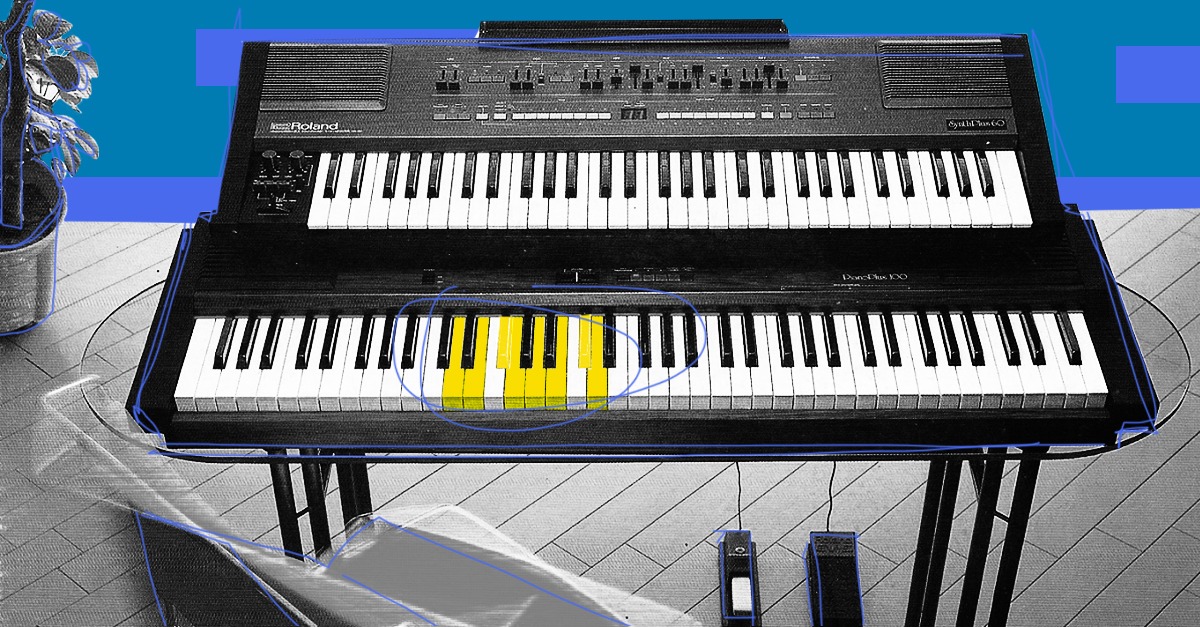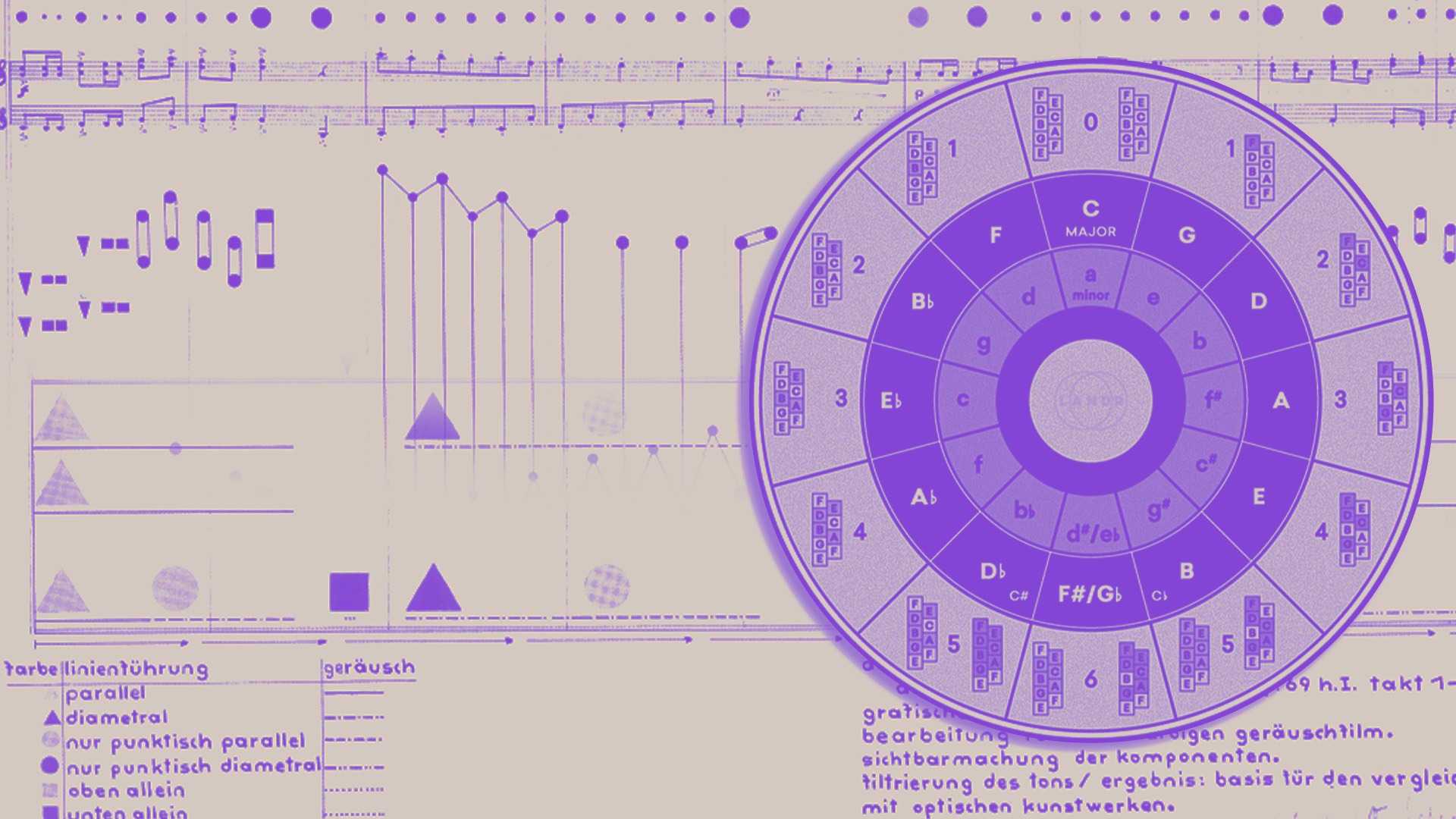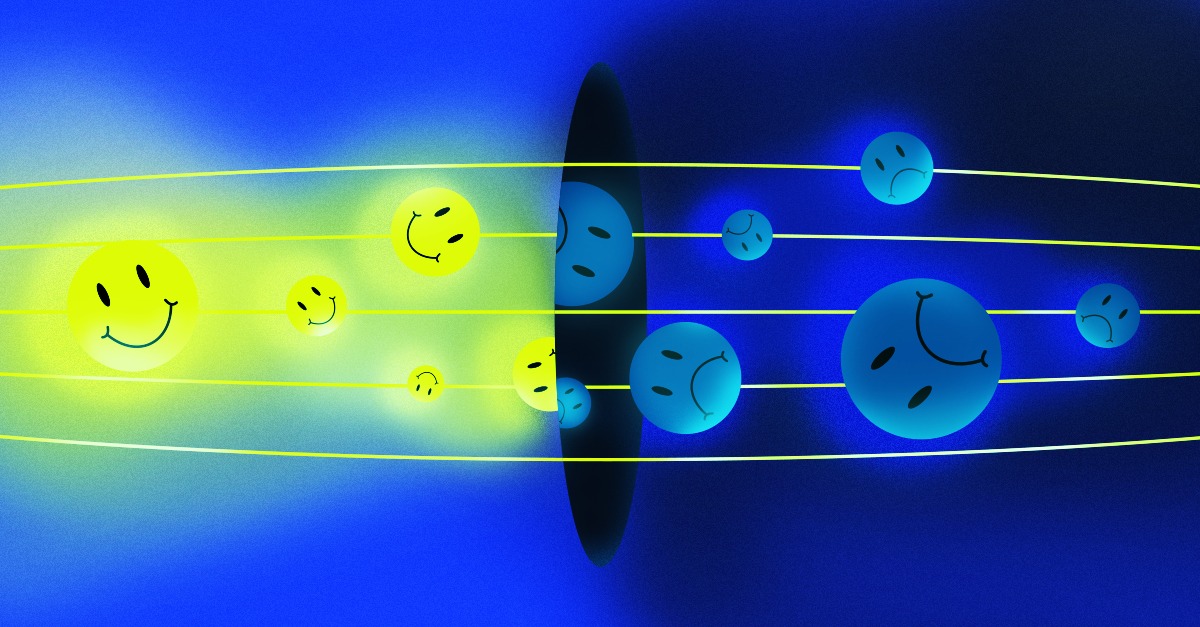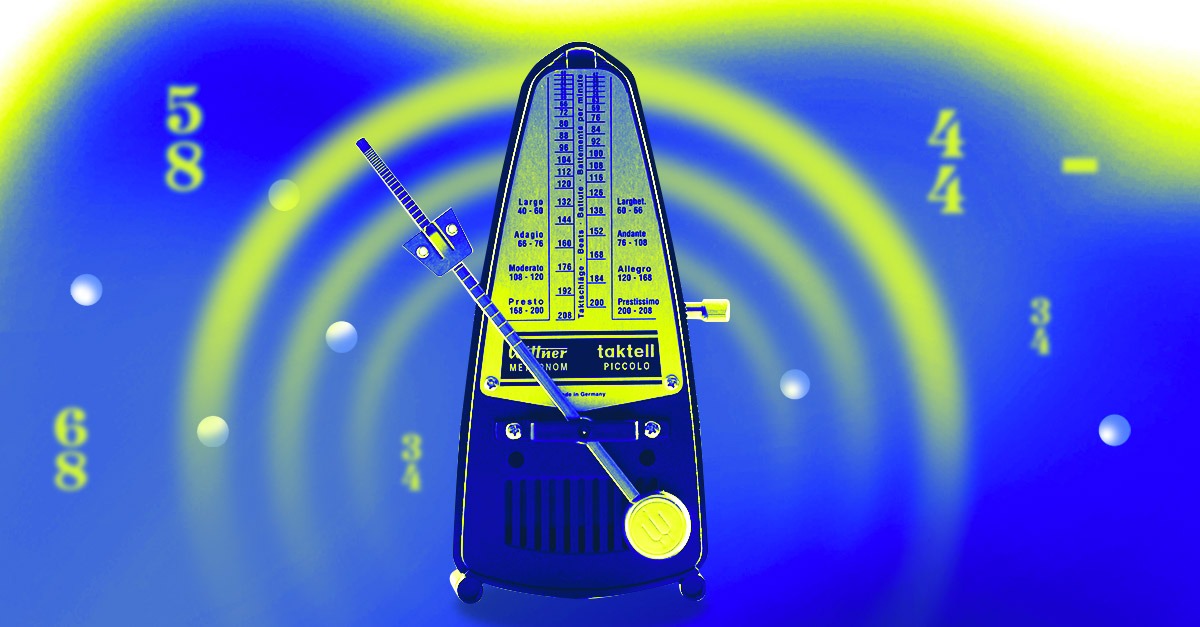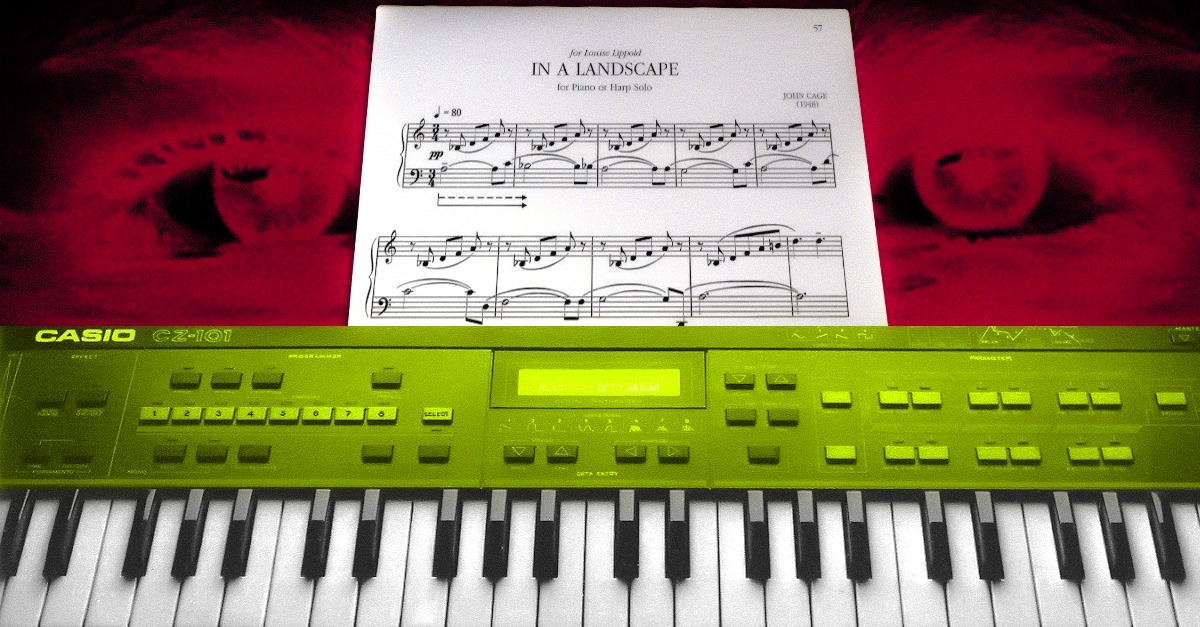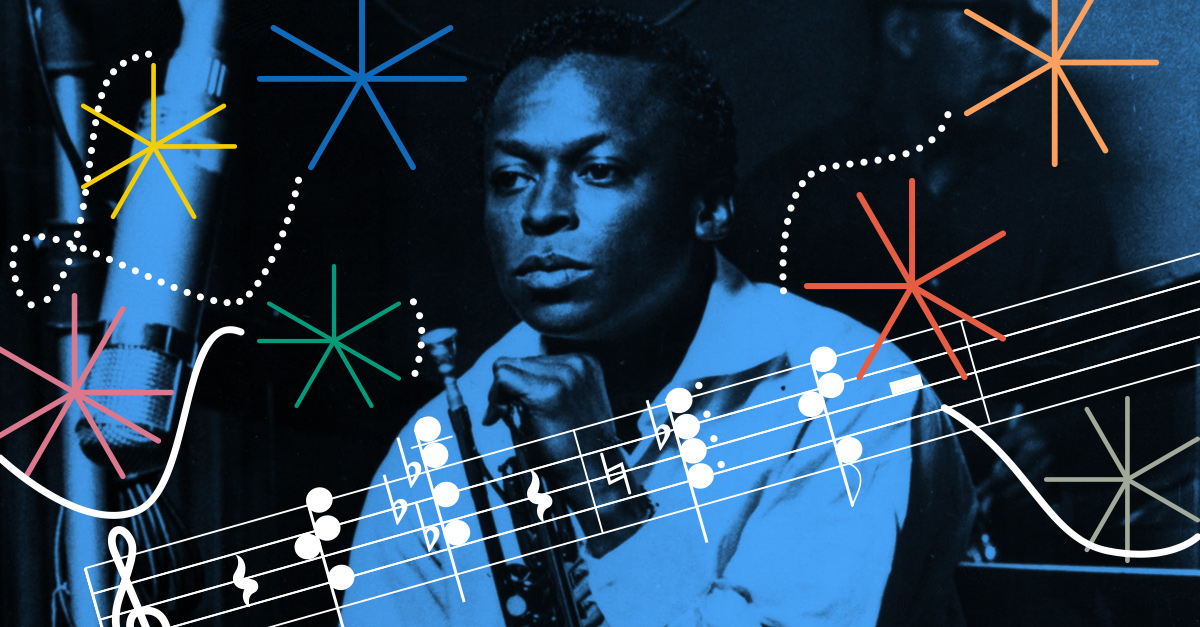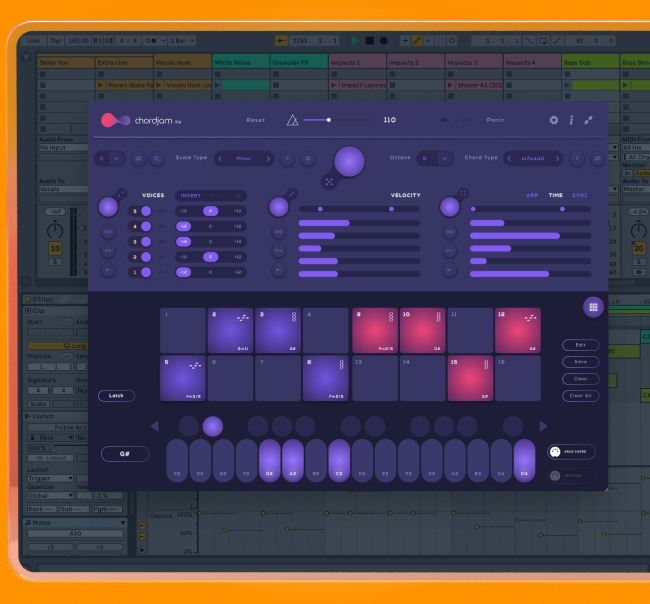
Understanding Simple vs. Compound Meter: A Guide for Musicians
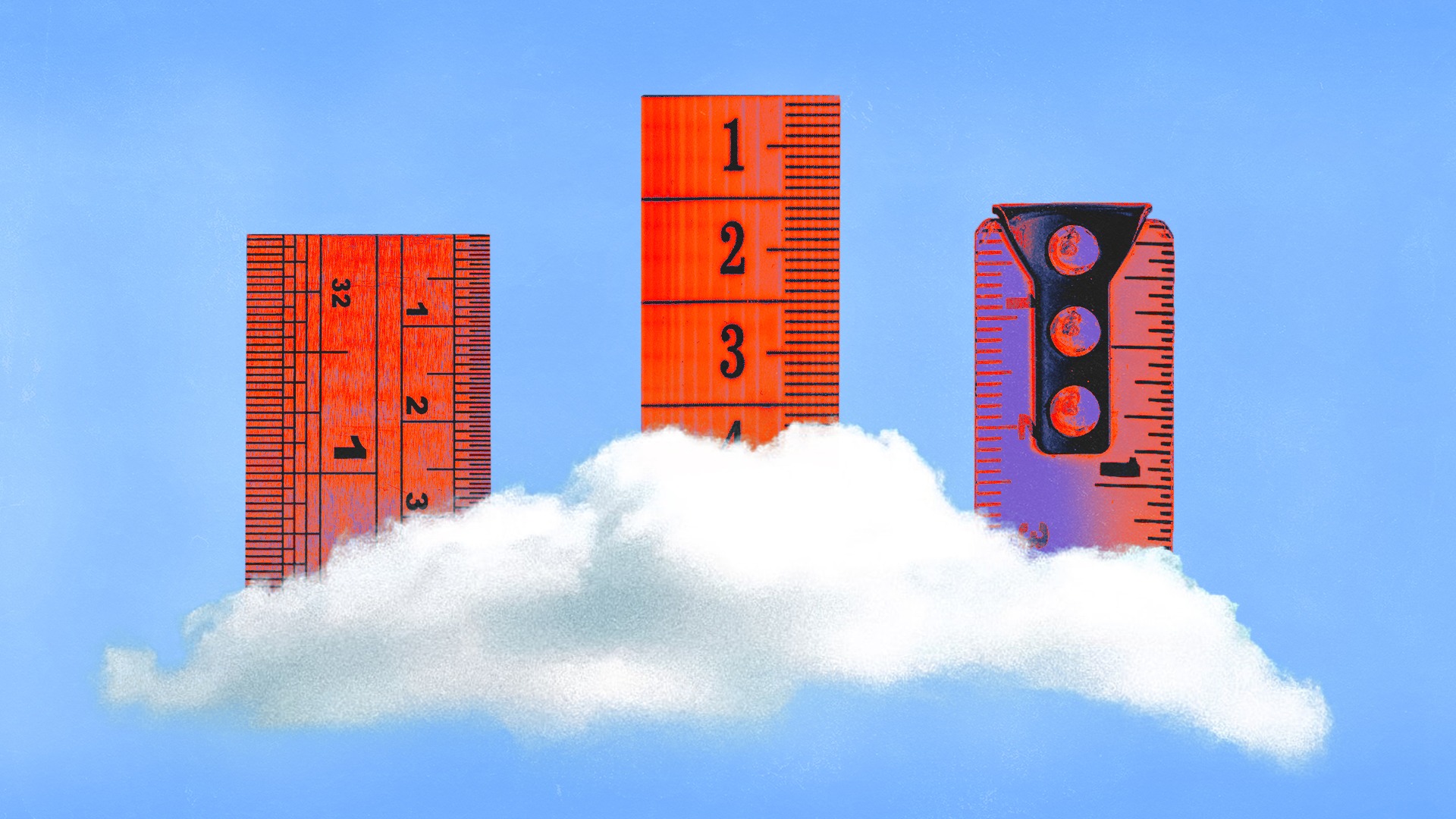
Meter is a fundamental concept in music that defines the rhythm of a piece. It refers to the organization of beats into regular groupings, or "measures." The two most common types of meter in music are simple meter and compound meter.
Simple meter divides the beats into two equal parts, while compound meter divides the beats into three equal parts.
Understanding the difference between simple vs. compound meter is crucial music theory for musicians and music producers.
Especially because it can help in creating and arranging music with different rhythmic feels and grooves.
In this article, we’ll explore the differences between simple and compound meter, how to identify them, and why it’s important to understand these concepts.
Differences between simple meter and compound meter
Simple meter and compound meter are two different types of time signatures that are commonly used in music.
The main difference between the two is the way that the beat is divided. In simple meter, the beat is divided into two equal parts, while in compound meter, the beat is divided into three equal parts.
Another way to think about this is that simple meter is based on duple subdivisions (dividing the beat into two parts), while compound meter is based on triple subdivisions (dividing the beat into three parts).
This fundamental difference in subdivision gives simple and compound meter a distinct rhythmic feel.
In general, simple meter tends to have a more straightforward and predictable rhythm, while compound meter can sound more complex and syncopated.
Simple meter is often used in music that is meant to have a more driving or steady pulse, while compound meter can be used to create a more laid-back or groovy feel.

Identifying simple and compound meter
When listening to music, it can be easy to identify the rhythm and feel of a piece, but it’s not always clear whether the meter is simple or compound.
Here are some tips for identifying simple and compound meter.
Simple meter
In simple meter, the beats are divided into two equal parts, and the time signature typically includes a 2, 3, or 4 as the top number.
For example, 2/4, 3/4, and 4/4 are all simple meters. When listening to a piece in simple meter, the rhythm feels straightforward and easy to follow.
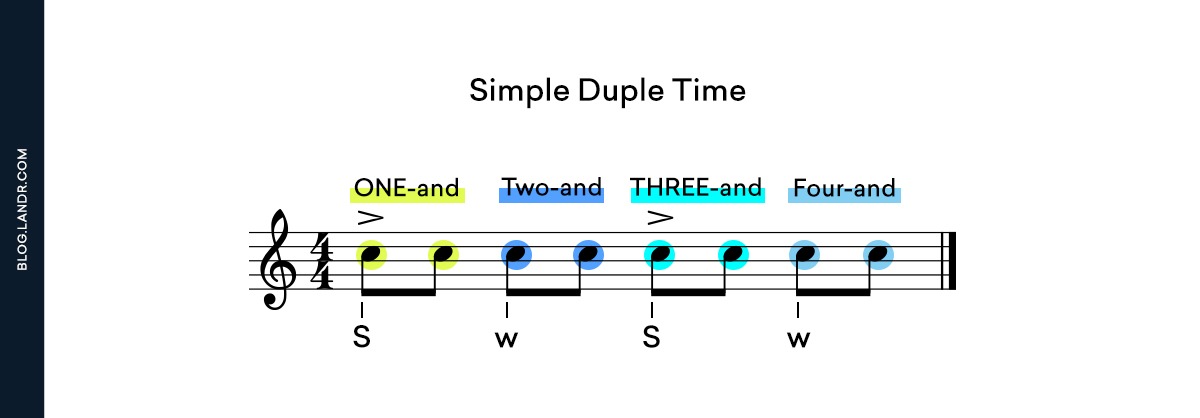
In simple meter, beats are divided into groups of two. This example in 4/4 gives four beats to a bar.
Compound meter
In compound meter, the beats are divided into three equal parts, and the time signature typically includes a 6, 9, or 12 as the top number.
For example, 6/8, 9/8, and 12/8 are all compound meters. When listening to a piece in compound meter, the rhythm feels more complex and can be more difficult to follow than simple meter.
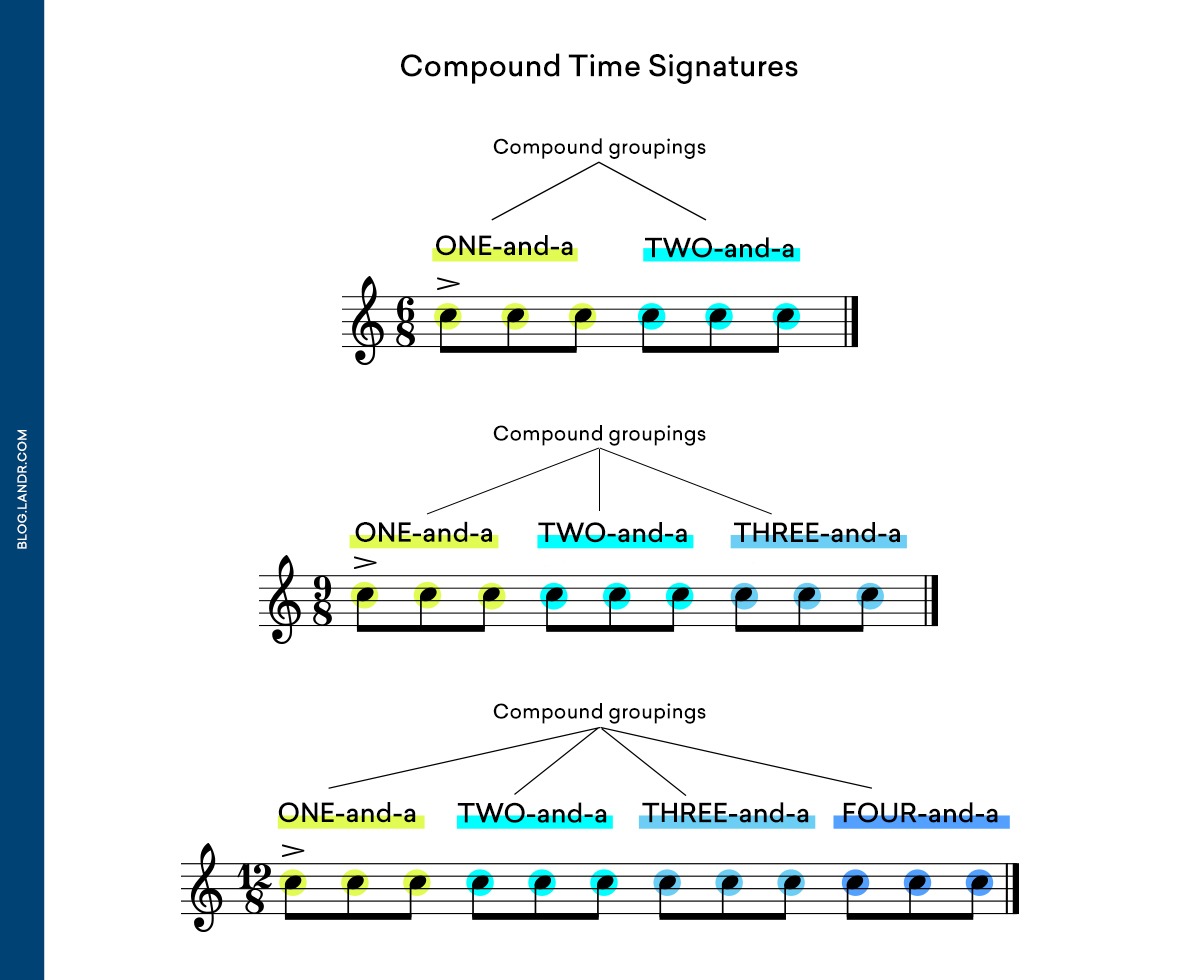
In compound time, strong and weak beats are divided into groups of three. With the time signature counting all beats in measure.
Now let’s take a look at some examples of songs with simple and compound meter to illustrate the differences.
Get music theory fundamentals down
Start here with these detailed guides.

Simple and compound meter examples
“We Will Rock You” by Queen is a classic example of a song in simple quadruple meter, with a time signature of 4/4. The beat is divided into four equal parts, and the rhythm feels straightforward and easy to follow.

Counting to 4 along to We Will Rock You is pretty straightforward
“Plastic Bag” by Drake is an example of a song in compound triple meter, with a time signature of 6/8. The beat is divided into three equal parts, giving the rhythm a more complex, syncopated feel.

The lilting feel of this Drake joint is a great example of 6/8 time.
By listening to and analyzing different songs, you can develop an ear for identifying simple and compound meter and start to understand how these concepts affect the feel of a piece of music.
Why write music in compound meter?
Writing music in compound meter is a great way to add complexity and interest to a piece.
Because the beat is divided into three equal parts, rather than the usual two, it can create a sense of movement and fluidity that is unique to compound meter.
In addition, compound meter can add a certain sophistication to a piece, especially when combined with syncopation and other rhythmic devices.
It can also be used to create a sense of tension or urgency, as the three-part division of the beat can create a feeling of acceleration or deceleration.
Another advantage of compound meter is that it can create a sense of cultural or historical authenticity.
Many traditional folk and dance music styles use compound meters, such as Irish jigs and reels, Middle Eastern rhythms, and African drumming patterns.
By incorporating compound meter into your music, you can create a sense of depth and complexity that can set your music apart from the usual, predictable rhythms of popular music.
Experimenting with different compound meters and rhythmic devices can open up new possibilities for your music and help you to develop a unique voice as a musician.
Whether you’re writing folk music, rock, or electronic music, the addition of a compound meter can elevate your rhythm and give it a unique flavor.
Summarizing simple vs. compound meter
Understanding meter is crucial for musicians to develop a strong sense of rhythm.
Simple meter is characterized by a steady and predictable beat, while compound meter adds complexity and interest through its division of beats into groups of three.
By identifying and practicing identifying simple vs. compound meter in music, musicians can improve their sense of rhythm and better understand the nuances of different musical styles.
We hope this article has provided you with a solid foundation for identifying and understanding simple and compound meter in music.
Remember to keep listening to music with a critical ear and to practice identifying meter in different songs to improve your skills.
With time and practice, you’ll be able to develop a deeper appreciation for the many ways in which meter contributes to the beauty and complexity of music.
Gear guides, tips, tutorials, inspiration and more—delivered weekly.
Keep up with the LANDR Blog.



